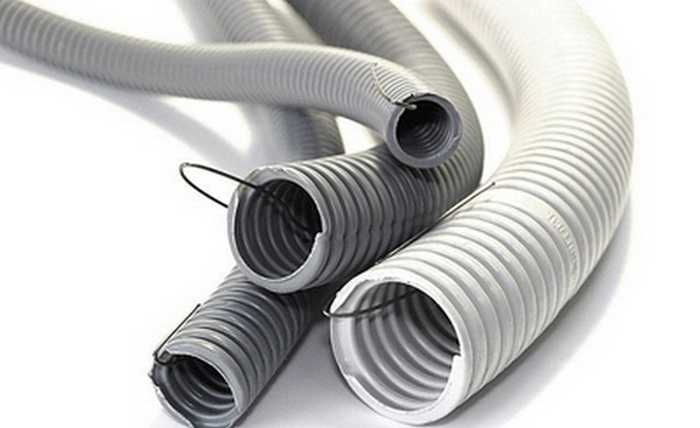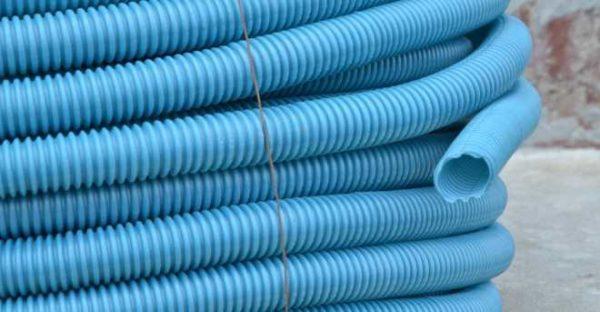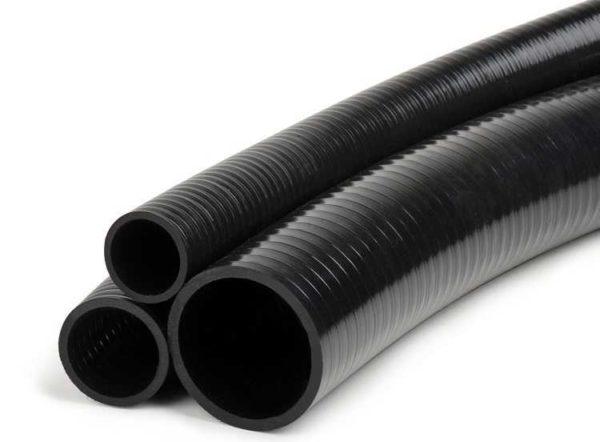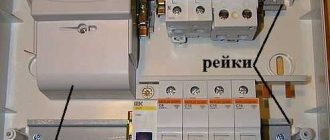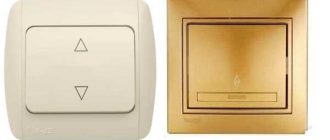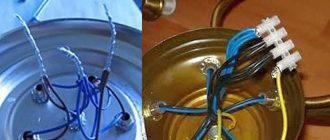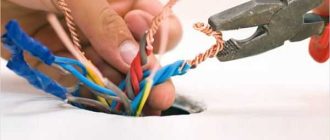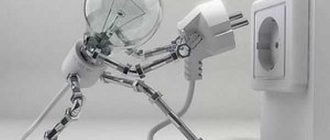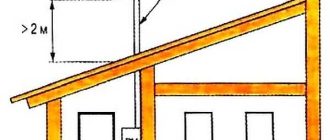When reconstructing wiring or installing new wiring, it is recommended to “pack” it in a protective sheath. Most often corrugated electrical pipes are used, which are usually called “corrugation for cables and wires”. It is a round in cross-section hose with a ribbed surface. Due to the ribbing, its flexibility is significantly increased.
Зміст статті
Why corrugation is needed
Laying electrical cables and wires in corrugated wires is recommended for various reasons:
- When laying in combustible walls (wooden or frame walls), behind combustible finishes (carpentry, PVC boards), when attaching to wooden floors – for fire safety reasons. In this case, non-combustible sheathing is selected.
- When installing behind finishing materials – behind wool, plasterboard, PVC boards, etc. – for safety reasons. To make it more difficult to damage the cable when trying to hang something on the wall. In that case, the most important indicator is the hardness of the sheath.
Corrugated pipes for electrical wiring come in different colors. This is not a simple matter, colors have a certain value - When laying the cable in the screed or under the floor, under the finish, corrugated pipes are used for several purposes. First, to protect against squeezing when pouring concrete. Secondly, to be able to change the cable in case of damage without destroying the floor. Third, to protect against damage.
- In outdoor installation, the sheath is needed to protect the cable from atmospheric effects (ultraviolet) and mechanical damage.
In general, from mechanical destruction corrugation, even metal, – not the best protection. You can only hope that when you feel that the drill bit has fallen through, you will be able to stop in time. And to be sure not to get into the wiring, it is better to have an accurate plan of its laying with measurements and binding to the corners. After all, the cable in the corrugation, even under load, determines not every wiring detector. So do not forget before pouring the screed, before finishing, take pictures, sketch the distance.
Types of corrugations for laying cables
Corrugation for cable there are different in strength:
As you can see, the classification goes by strength properties, which determines the area of use.
Varieties
In addition to all this, there is also a corrugation with a broach and without. The pull-through is a thin rope or wire that facilitates tightening the cable into the corrugation. The cable is tied to the end of the cable, pulling the other end, tucking the cable inside. It is problematic to cope with this task without pulling – with sufficient rigidity, a few meters of cable can be simply slipped inside, but if the route is long, it will be too difficult.
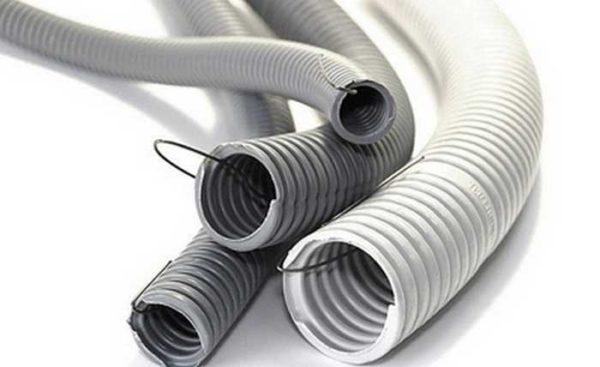
If we talk about types of plastic corrugation, it should be mentioned that there is a two-layer corrugation. On the outside it has the same ribbed surface, and inside it is smooth. The corrugation for this type of cable is expensive, but if necessary, you can really pull a new cable into it. In those types where the inner wall is ribbed, this is not always possible – if the route has a minimum of turns, and those on a wide radius.

Metal corrugation for cables is also different. It is made of galvanized or stainless steel. In addition, there is a metal corrugation with a polymer coating. It has the best characteristics for protection against dust, moisture. Such a protective shell is also called metal-polymer.
Of what materials
Corrugation for cables and electrical wires is made of plastic and metal. Materials are used differently, with different characteristics. They should be chosen based on the tasks that they should perform.
- Polypropylene (PPP). The color of this corrugation is usually blue, the material is self-extinguishing, does not support combustion. It is characterized by high water resistance can be used to lay cables on the street or in rooms with high humidity.
- PVC (polyvinyl chloride). By color – gray pipes, self-extinguishing. PVC corrugation is not waterproof, can be used only in dry rooms.
Black cable corrugation is most often made of HDPE, but can also be made of polypropylene (PPP) - HDPE (low pressure polyethylene). By color – orange, black, the material is flammable, but resistant to chemical influences and water. Scope – laying in the screed and grooves in non-combustible walls, open laying on the street.
- Metal (stainless or galvanized steel). Non-combustible material, resistant to mechanical and chemical influences. Recommended for wiring in combustible buildings (wooden, frame). Also good for laying in the open air.
If we talk about compliance with fire safety standards when installing a gasket in combustible walls, the ideal option is a metal pipe. It saves from the loads that can arise when changing the size of the building. Rodents cannot cope with it either. It is also the best option from the point of view of fire safety: even in the event of short-circuit currents and failure of the automatic protection device, the probability of burning the pipe with a wall thickness of 2 mm is very low. This means that a fire will not start. If the laying of electrical cables in pipes you do not entice at all, then you can use metal cable channels or corrugations made of stainless steel or galvanized.
Corrugation for cable, sizes, prices
Corrugated pipes for electrical networks are available in sizes from 16 mm to 65 mm. When choosing the size should be taken into account that these products have two diameters – outer and inner. If you are going to lay several conductors – wires or cables – the diameter should be selected so that there was a gap of at least half of the radius. This requirement is based on the fact that in the group laying (it is necessary, by the way, take a special cable), it will be more heated and the presence of an air gap will contribute to better heat dissipation.
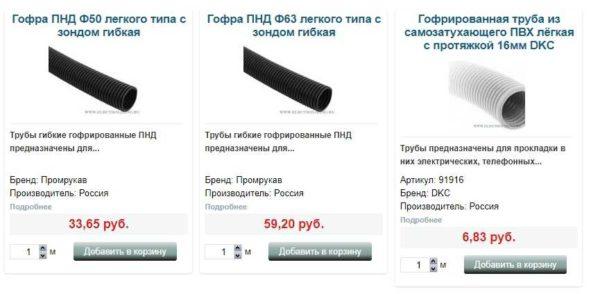
Choice of size
The choice of the diameter of the corrugation depends on the area where it will be laid:
The diameter of the corrugation for cable laying is selected depending on the number and cross-section of wires. The data for copper conductors are given in the table.
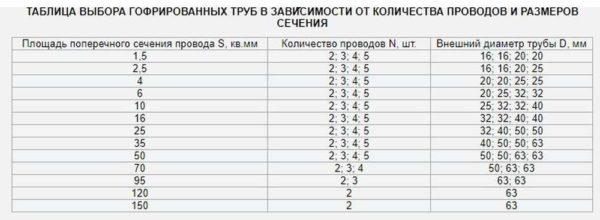
This information is for reference, but you can be guided by it. You can take a larger, but not smaller diameter.
Prices
If we talk in general, the cheapest – the corrugation for cable PVC, in the middle range – PP and HDPE, the most expensive of all – metalogofra. Moreover, the option with broaching is slightly more expensive than without it. When buying should pay attention to the same wall thickness, the uniformity of color.

Sold corrugated for cable in bays of 50 and 100 meters, less often you can find on meters, but the price then is a little higher. In general, the price depends not only on the material, but also on the wall thickness. The cheapest is a light PVC corrugation for cable, but it sometimes looks more like just a film. From what such can protect, it is difficult to say. If you are concerned about quality, it is better to buy everything related to electricity not in construction supermarkets such as Leroy, etc., but in specialized ones. The quality there is usually better, and prices if higher, then justifiably. To give you an idea of the possible range of prices, the table summarizes several types of corrugations with brief technical characteristics.
| Ім'я | Тип | Outer diameter | Inner diameter | Stretch | Price per meter | IP | Мета |
|---|---|---|---|---|---|---|---|
| PVC corrugation | light | 16 мм | 11,4 mm | Так. | 2,4 rub | ||
| Black corrugated HDPE pipe | DCS | 15,7 mm | 11,3 mm | Так. | from 7.5 rub/m | 55 | for concealed installation |
| Corrugated HDPE pipe black | DCS | 19.5 mm | 14,5 mm | Так. | from 8.9 rub/m | 55 | for concealed wiring |
| Red double-wall HDPE pipe | rigid | 50 mm | 41,5 mm | Так. | 78.5 rub/m | 44 | for concealed installation |
| HDPE pipe heavy | heavy | 31 mm | 23,4 mm | Так. | from 9.7 rub/m | 55 | concealed laying |
| PPL (polypropylene) corrugated pipe | light | 19.7 mm | 14,8 mm | Так. | from 28 rub/m | 55 | open, concealed |
| Corrugated tube polyamide | black | 21,2 mm | 16,8 mm | no | from 52 rubles/m | 68 | exposed, concealed gasket, UV resistant |
| Polyamide corrugated tube | gray | 21.2 mm | 16.8 mm | Так. | from 48 rubles/m | 68 | open, concealed installation |
Mounting of corrugated pipes
In case of outdoor (open) installation, special plastic clips are used for fixing the corrugations for cables and wires, which are selected according to the outer diameter of the pipe. The clips are fixed at 20-30 cm intervals on self-tapping screws or dowels – depending on the type of wall. The cbaley corrugation is inserted into the installed clips and pressed until it clicks into place. When installing in a groove, it is fixed with plastic ties or dowel ties. You can also use homemade fasteners – tin strips with nails or self-tapping screws in the middle.
The following recommendations should be taken into account when designing the route. Proceed from the fact that the route should be without sharp turns – in order to be able to tighten a new piece of cable if necessary. Cause:
These rules apply to the development of the route for above-ground (suspension) and underground cable installation, among others. If the route is long, and you want to be able to “in case of what” the cable to pull without replacing the corrugation, develop the route taking into account these rules.
Installation of wiring in the corrugation
When installing wiring in a house or apartment pieces of corrugated are fixed between junction boxes, from them – to switches / sockets, to lighting devices. Here the sections are usually small, straight, with a maximum of one or two turns. So there are no problems with tightening the cable.
If you tighten in the corrugation for the cable should be several conductors, they are folded, along the entire length of the tape or duct tape with a step of 30-50 cm (depending on the rigidity). From one edge, peel off the rigid insulation at 10-15 cm, the wires are twisted into a common bundle, form it into a loop (fix the loop also with tape or duct tape). If the bundle turns out to be too thick, you can form loops separately, just pull the twine through everything. To this loop tie the cable, and then start pulling it from the opposite side, pulling the sheath over the cables. It is necessary to pull without jerks, smoothly – in order not to damage the cable or the cable.
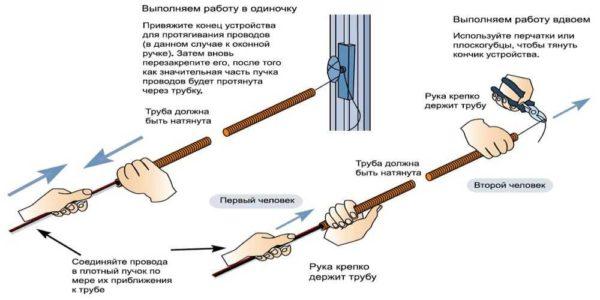
When installing, make sure that the cable puller does not slip out. To be sure, you can secure the cable with a piece of tape. There are two approaches to installation:
- First, secure the corrugation, then thread the cable or wires into the finished piece.
- Спочатку протягніть кабель, а потім закріпіть його.
Перший спосіб хороший при монтажі внутрішньої проводки, де відстані невеликі - від коробки до коробки, від коробки до розетки тощо. Другий спосіб більше підходить для монтажу довгих ділянок.
Features of outdoor wiring on the street
При прокладанні проводки на вулиці її зазвичай підвішують на тросі. Для використання на вулиці підійде металева з нержавіючої сталі, а краще - металополімерна гофра для кабелю, а також пластикова з поліаміду (чорного або синього кольору). Всі ці матеріали мають стійкість до ультрафіолету, зберігають гнучкість при мінусових температурах.
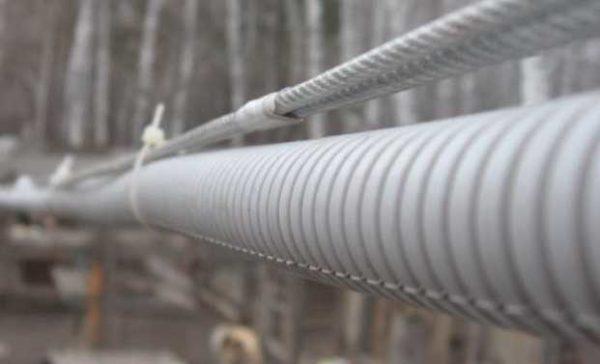
Під час монтажу натягнутий в гофрі кабель підвішують на трос. Найдешевше кріплення - звичайні пластикові стяжки. Існують також спеціальні підвіси.

